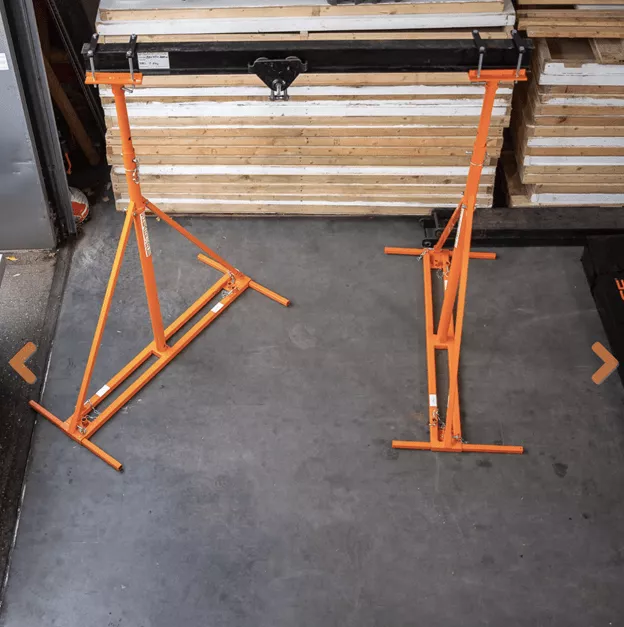The Advantages And Disadvantages Of A Steel Gantry
Steel gantries were once the only choice but now they are facing strong competition from aluminium gantries. To help you make the right choice for your situation, here is a straightforward guide to the pros and cons of steel gantries as compared to aluminium.
The Advantages of a Steel Gantry
The three main advantages of a steel gantry are their use in COMAH sites, heavy load capacity and robustness and durability. Here is a closer look at each of these points.
- Use in COMAH sites
Where plant areas are made of steel, steel gantries would preclude the use of aluminium gantries due to dissimilar metals and where corrosion exists the use of aluminium could create a spark.
- Heavy load capacity
The tensile strength of regular structural steel is typically in the range of 400 MPa to 500 MPa (58,000 to 72,500 psi). By contrast, the tensile strength of aluminium is typically around 90 MPa (13,000 psi). This means that for use cases where raw strength matters, a steel gantry is really the only choice.
- Robust and durable
One of the defining characteristics of steel is that it tends to hold its shape right up to its maximum capacity. If it is pushed beyond its maximum capacity, it will typically break cleanly (i.e. snap). There are two key benefits to this.
Firstly, a steel gantry can stand up to abuse that would literally destroy an aluminium gantry. Secondly, if a steel gantry does become damaged, that damage is obvious. That means it can be dealt with before it becomes a bigger issue.
By contrast, if an aluminium gantry is pushed beyond its capacity, it will usually deform before it actually breaks. This deformation may be subtle enough to pass unnoticed at first, even if it is causing problems.
The Disadvantages of a Steel Gantry
The three main disadvantages of a steel gantry are weight, lack of portability and vulnerability to corrosion.
- Weight
Steel is about 2.5 times as dense as aluminium. This translates into significant extra weight. This in turn translates into extra costs, particularly for transport.
Essentially, heavier loads place more strain on a vehicle and hence increase fuel consumption. The extra weight of a steel gantry may also increase labour costs as more people may be required to move it (e.g. two people instead of one).
Of course, the extent to which this is an issue depends entirely on the extent to which a gantry needs to be moved. For use cases where a gantry is likely to stay in one place either permanently or for extended periods, transport issues are, at most, a minor concern.
- Lack of portability
The weight of a steel gantry has a direct impact on its portability. On a direct, like-for-like basis, a steel gantry is always going to be less portable than an aluminium one.
That said, to a certain extent this disadvantage can be mitigated through effective steel gantry design. For example, SHEARFORCE gantries have rotating heads that allow their bases to be offset by up to 45°. This makes them much easier to set up, particularly in confined spaces. In addition, the SHEARFORCE gantry design allows it to be packed in a bespoke bag for handling and transportation which is a unique feature in the world of gantries.
- Vulnerability to corrosion
While steel is, overall, a highly robust and durable metal, it does have one major vulnerability and that is corrosion. Again, the extent to which this is an issue depends very much on the working environment. Moreover, even when corrosion is a potential issue, steps can be taken to mitigate the risk such as by ensuring the gantry is covered in protective paint. Where the SHEARFORCE steel gantry is used in a maritime environment, the protective paint can be replaced with galvanising thus protecting the steel inside and out.
To find out more about steel gantries and how they can help your lifting processes, please get in touch with SHEARFORCE today!


